Below is a list of various mental disorders recognized by the Diagnostic and Statistical Manual of Mental Disorders (DSM-5), which is widely used for diagnosing mental health conditions.
We discussed the 5 most common mental disorders in the previous blog- Part 1. Other mental disorders are below:
1. Stress
The body’s response to demands or pressures, both internal and external. Excessive or prolonged stress can negatively impact mental and physical health.

Stress is a natural and normal response to the demands and pressures of life. It is the body’s way of reacting to a perceived threat or challenge. While some levels of stress can be beneficial and motivating, chronic or excessive stress can have negative effects on physical and mental health.
Some key points about stress:
Types of Stress
There are 3 types of Stress:
- Acute Stress: Short-term stress response to immediate challenges or demands.
- Episodic Acute Stress: Frequent episodes of acute stress, are often experienced by individuals with a chaotic or high-pressure lifestyle.
- Chronic Stress: Long-term and ongoing stress, often related to persistent life challenges or traumatic experiences.
Causes of Stress: Stress can be triggered by various factors, including work-related pressures, financial difficulties, relationship problems, major life changes, health issues, or traumatic events. Each person may respond differently to different stressors.
Effects of Stress
Prolonged or chronic stress can have a significant impact on overall well-being, affecting both physical and mental health. Some common effects of stress include:
- Physical symptoms: Headaches, muscle tension, fatigue, sleep disturbances, digestive problems, weakened immune system, and increased risk of various health conditions.
- Emotional symptoms: Anxiety, irritability, mood swings, restlessness, feeling overwhelmed, difficulty concentrating, and changes in appetite.
Managing Stress
Effective stress management involves adopting healthy coping strategies to reduce the negative impact of stress. Some strategies include:
- Self-Care: Engaging in activities that promote relaxation, such as exercise, getting enough sleep, practicing mindfulness or meditation, and pursuing hobbies.
- Healthy Lifestyle: Eating a balanced diet, avoiding excessive caffeine and alcohol, and maintaining regular physical activity.
- Social Support: Seeking support from family, friends, or support groups can provide a sense of connection and help in managing stress.
- Time Management: Prioritizing tasks, setting realistic goals, and practicing effective time management techniques can reduce feelings of being overwhelmed.
- Stress Reduction Techniques: Deep breathing exercises, progressive muscle relaxation, guided imagery, and other relaxation techniques can help manage stress.
- Seeking Help: If stress becomes overwhelming or starts to interfere with daily functioning, it may be beneficial to seek support from a mental health professional who can provide guidance and strategies for stress management.
2. Post-Traumatic Stress Disorder (PTSD)
PTSD symptoms may include flashbacks, nightmares, hypervigilance, and trigger avoidance.
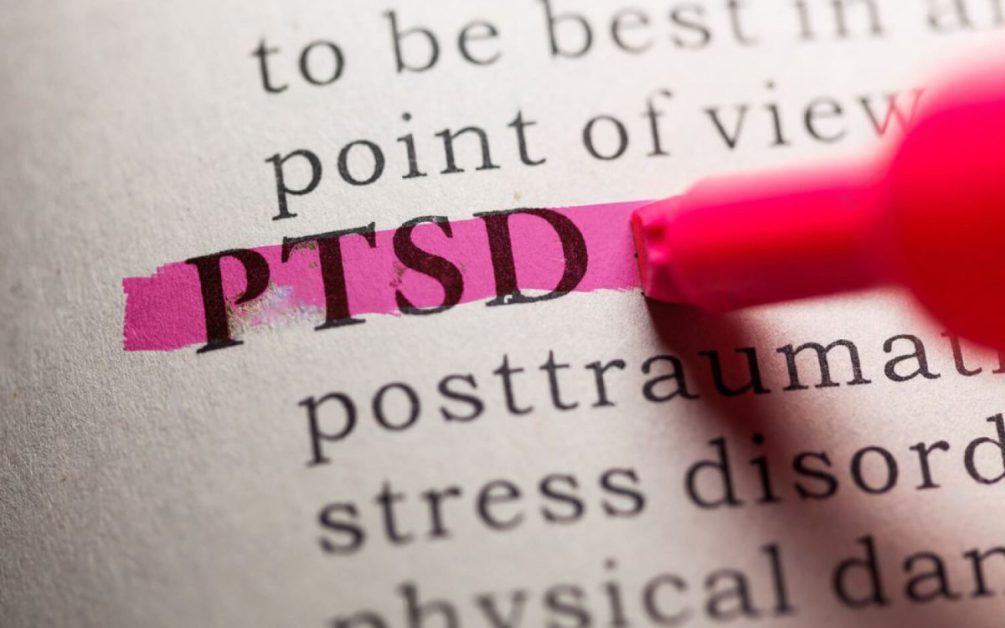
PTSD can occur in response to various types of trauma, such as military combat, sexual assault, natural disasters, accidents, or witnessing violence.
Some key points about PTSD:
Symptoms
PTSD is characterized by a range of symptoms that can be grouped into four main categories:
- Intrusive Thoughts: Distressing and unwanted memories of the traumatic event, flashbacks, nightmares, or intense emotional distress when reminded of the event.
- Avoidance: Avoiding places, people, activities, or situations that remind the person of the trauma, as well as avoiding thoughts or feelings associated with the event.
- Negative Changes in Thinking and Mood: Persistent negative thoughts, feelings of guilt or shame, distorted beliefs about oneself or others, difficulty experiencing positive emotions, and a sense of detachment from others.
- Hyperarousal and Reactivity: Being easily startled, having difficulty concentrating or sleeping, feeling on edge, being irritable or angry, and engaging in self-destructive behaviors.
- Duration and Impairment: To be diagnosed with PTSD, the symptoms must persist for at least one month and cause significant distress or impairment in daily functioning.
Treatment
PTSD is a treatable condition, and early intervention is crucial. Treatment options for PTSD typically include a combination of the following:
- Therapy: Trauma-focused psychotherapies, such as Cognitive Processing Therapy (CPT) and Eye Movement Desensitization and Reprocessing (EMDR), help individuals process traumatic memories and develop coping skills to manage symptoms.
- Medications: Antidepressant and anti-anxiety medications may be prescribed to help alleviate symptoms of depression, anxiety, and sleep disturbances.
- Supportive Interventions: Support groups, peer support, and participation in trauma-informed programs can provide additional support and validation.
- Self-Care: Engaging in self-care practices can also help manage PTSD symptoms. These may include exercise, maintaining a regular sleep schedule, practicing relaxation techniques, engaging in creative outlets, and seeking support from loved ones.
3. Bipolar Disorder
A mood disorder characterized by extreme changes in mood, activity, and levels. This includes episodes of mania (elevated mood and excessive energy) and depression.
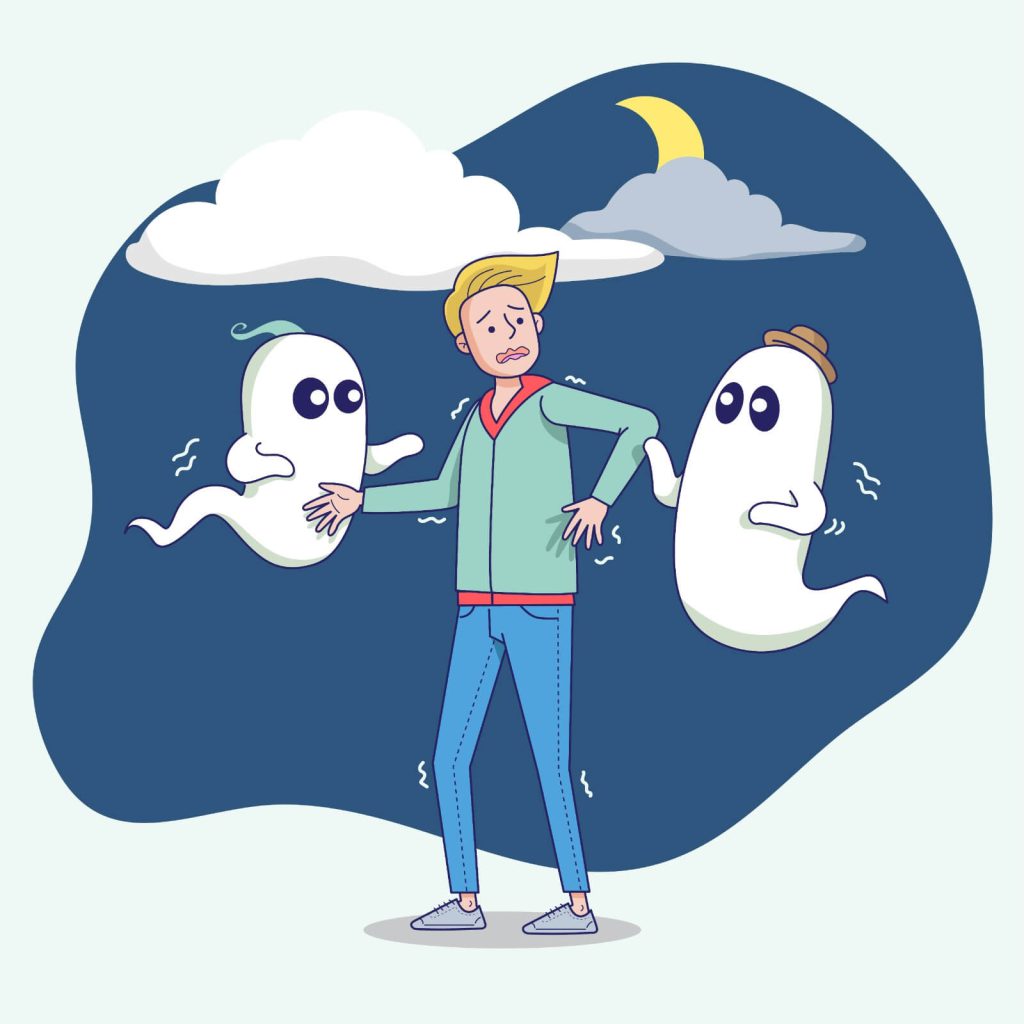
Bipolar Disorder, formerly known as manic-depressive illness, is a mental health condition characterized by extreme mood swings that include episodes of mania and depression. Individuals with bipolar disorder experience shift in mood, energy levels, and activity levels that can significantly impact their daily functioning and quality of life.
Some key points about Bipolar Disorder:
Mood Episodes
Bipolar Disorder is characterized by distinct mood episodes, including manic episodes, depressive episodes, and sometimes a combination of both.
- Manic Episodes: Manic episodes involve a period of abnormally elevated mood or irritability, increased energy levels, excessive talkativeness, racing thoughts, decreased need for sleep, inflated self-esteem or grandiosity, impulsivity, and engaging in high-risk behaviors.
- Depressive Episodes: Depressive episodes involve a period of persistent sadness, loss of interest or pleasure in activities, changes in appetite or weight, sleep disturbances, and feelings of worthlessness or guilt.
Types of Bipolar Disorder
There are the following types of Bipolar Disorder:
- Bipolar I Disorder: This involves the presence of manic episodes that may or may not be accompanied by depressive episodes.
- Bipolar II Disorder: This involves recurrent depressive episodes along with hypomanic episodes, which are less severe than full manic episodes.
- Cyclothymic Disorder: This involves recurring periods of hypomanic and depressive symptoms that are less severe and persist for at least two years.
Causes
The exact cause of Bipolar Disorder is not known, but it is believed to result from a combination of genetic, biological, and environmental factors. Individuals with a family history of Bipolar Disorder or other mood disorders may be at higher risk.
Treatment
Bipolar Disorder is a chronic condition, but with proper treatment, individuals can manage their symptoms and lead fulfilling lives.
- Medications: Mood stabilizers, antipsychotics, and antidepressants may be prescribed to help stabilize mood and manage symptoms.
- Psychotherapy: Therapy, such as Cognitive-Behavioral Therapy (CBT), can help individuals understand their condition, manage stress, develop coping strategies, and improve relationships.
- Lifestyle Changes: Adopting a healthy lifestyle, including regular exercise, maintaining a consistent sleep schedule, and avoiding alcohol and drug use, can be beneficial in managing symptoms.
- Support Network: Building a support network of friends, family, and support groups can provide emotional support and help individuals navigate their condition.
- Management and Self-Care: It is important for individuals with Bipolar Disorder to actively participate in their treatment and engage in self-care practices, such as monitoring their moods, and maintaining a routine.
4. Attention-Deficit/Hyperactivity Disorder (ADHD)
Attention-Deficit/Hyperactivity Disorder (ADHD) is also known as a neurodevelopmental disorder.
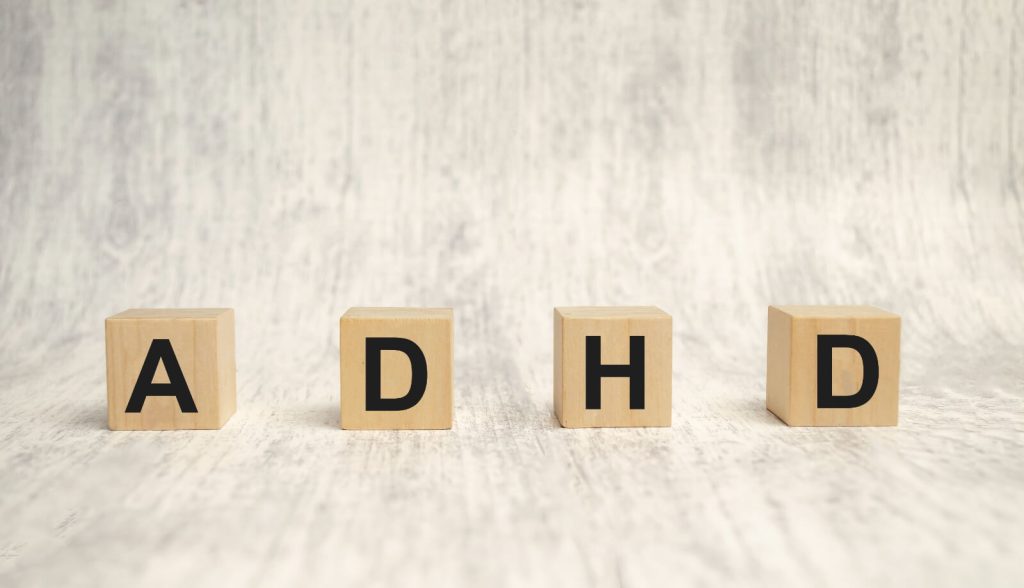
Attention-Deficit/Hyperactivity Disorder (ADHD) is a neurodevelopmental disorder that commonly begins in childhood and can persist into adulthood.
Here are some key points about ADHD:
Symptoms
There are two types of symptoms of ADHD: Inattentive and Hyperactive-impulsive.
- The inattentive symptoms include difficulty sustaining attention, being easily distracted, forgetfulness, and trouble organizing tasks.
- The hyperactive-impulsive symptoms include excessive talking, fidgeting, restlessness, impulsivity, and difficulty waiting their turn.
Types
- Predominantly Inattentive Presentation (formerly known as ADD): Characterized by significant inattentive symptoms without prominent hyperactivity.
- Predominantly Hyperactive-Impulsive Presentation: Characterized by significant hyperactive and impulsive symptoms without prominent inattentive symptoms.
- Combined Presentation: Characterized by both inattentive and hyperactive-impulsive symptoms.
Causes
The exact cause of ADHD is not known, but research suggests that it is likely to be a combination of genetic, environmental, and neurological factors. Risk factors for ADHD include a family history of the disorder, exposure to environmental toxins (such as lead), premature birth, low birth weight, and prenatal substance use.
Impact
ADHD can have significant effects on various aspects of life, including academic performance, work productivity, relationships, and overall quality of life. Individuals with ADHD may struggle with organization, time management, impulse control, and maintaining focus, which can lead to difficulties in meeting responsibilities and achieving goals.
Diagnosis
Diagnosis of ADHD involves a comprehensive evaluation that includes gathering information about the individual’s symptoms, medical history, and functional impairment. The Diagnostic and Statistical Manual of Mental Disorders (DSM-5) criteria are commonly used for diagnosing ADHD. The evaluation may involve input from multiple sources, such as parents, teachers, and mental health professionals.
Treatment
Treatment for ADHD often involves a multimodal approach that combines various interventions. The primary treatment options include:
- Behavioral Therapy: Behavioral interventions, such as parent training and cognitive-behavioral therapy, can help individuals develop strategies to manage symptoms, improve organizational skills, and enhance self-control.
- Medication: Stimulant medications, such as methylphenidate and amphetamines, are commonly prescribed to manage ADHD symptoms.
- Education and Support: Educating individuals, families, and teachers about ADHD and providing support and accommodations can help manage the challenges associated with the disorder.
- Coping Strategies: Developing effective coping strategies can be beneficial for individuals with ADHD. This may include using tools such as planners or organizational systems, breaking tasks into smaller, manageable steps, setting reminders, establishing routines, and practicing mindfulness and relaxation techniques.
5. Borderline Personality Disorder (BPD)
A mental health disorder characterized by unstable relationships, emotional dysregulation, impulsivity, and a distorted sense of self. Individuals with BPD often experience intense mood swings and difficulty managing emotions.

Borderline Personality Disorder (BPD) is a mental health disorder characterized by persistent patterns of instability in emotions, self-image, relationships, and behavior. Individuals with BPD often experience intense and rapidly shifting emotions, have difficulty regulating their emotions, and struggle with maintaining stable relationships. Here are some key points about Borderline Personality Disorder:
Symptoms
The symptoms of BPD can vary but typically include a combination of the following:
- Intense fear of abandonment and efforts to avoid real or imagined abandonment.
- Impulsivity in areas such as spending, substance use, reckless behavior, or self-harm.
- Unstable self-image or sense of self.
- Chronic feelings of emptiness or loneliness.
- Intense and rapidly shifting emotions, such as anger, anxiety, and depression.
- Dissociation or feeling detached from oneself or the surrounding world.
Causes
The exact causes of BPD are not fully understood, but a combination of genetic, environmental, and neurobiological factors is believed to contribute to its development. Traumatic experiences, such as childhood abuse, neglect, or other adverse life events, may also play a role in the development of BPD.
Diagnosis
Diagnosing BPD involves a comprehensive evaluation by a mental health professional. The diagnosis is based on a thorough assessment of the individual’s symptoms, medical history, and the presence of specific criteria outlined in the Diagnostic and Statistical Manual of Mental Disorders (DSM-5).
Treatment
The primary treatment options include:
- Dialectical Behavior Therapy (DBT): DBT is a specialized form of therapy designed to help individuals with BPD develop skills for emotional regulation, distress tolerance, interpersonal effectiveness, and mindfulness.
- Medication: Medications may be prescribed to address specific symptoms associated with BPD, such as depression, anxiety, or mood instability. However, medication is typically used as a complementary treatment alongside psychotherapy.
- Supportive Therapy: Individual and group therapy can provide support, validation, and guidance for individuals with BPD. Therapy can help individuals develop healthier coping strategies, improve self-esteem, and build more stable relationships.
- Self-Help Strategies: In addition to professional treatment, individuals with BPD can engage in self-help strategies to manage their symptoms and promote overall well-being. These strategies may include practicing self-care, engaging in stress-reducing activities, developing healthy coping mechanisms, maintaining a support system, and adhering to treatment recommendations.
It’s important to note that BPD is a complex disorder, and treatment can be challenging and require a long-term commitment. A comprehensive and individualized approach is necessary to address the unique needs of each person with BPD. If you or someone you know is struggling with BPD symptoms, it’s recommended to seek help from a qualified mental health professional for a proper diagnosis and appropriate treatment.
6. Substance Use Disorder (SUD)
A condition characterized by the compulsive use of substances despite harmful consequences.

Substance Use Disorder (SUD), commonly known as addiction, is a chronic condition characterized by the compulsive and harmful use of substances such as drugs or alcohol. It is a complex disorder that affects a person’s brain and behavior, leading to significant impairment in their daily life, relationships, and overall well-being. Here are some key points about Substance Use Disorder:
Symptoms
The symptoms of Substance Use Disorder can vary depending on the specific substance involved, but they generally include the following:
- Strong cravings and an intense desire to use the substance.
- Difficulty controlling or stopping substance use.
- Continued substance use despite negative consequences on health, relationships, work, or other areas of life.
- Neglecting responsibilities and interests due to substance use.
- Spending a significant amount of time and effort obtaining, using, and recovering from the substance.
Types of Substances
Substance Use Disorder can involve various substances, including but not limited to alcohol, opioids, stimulants, sedatives, hallucinogens, and cannabis.
Causes
The development of substance use disorder is influenced by a combination of environmental, genetic, and psychological factors. Factors such as a family history of addiction, early exposure to substances, underlying mental health disorders, and certain life stressors can increase the risk of developing SUD.
Diagnosis
A professional diagnosis of Substance Use Disorder is typically made by a healthcare provider or addiction specialist based on specific criteria outlined in the Diagnostic and Statistical Manual of Mental Disorders (DSM-5). The diagnosis considers the severity of the disorder, ranging from mild to moderate to severe.
Treatment
Effective treatment for Substance Use Disorder often involves a comprehensive approach that may include the following components:
- Detoxification: In cases of severe addiction, a supervised detoxification process may be necessary to safely manage withdrawal symptoms.
- Behavioral Therapies: Various psychotherapeutic approaches, such as Cognitive-Behavioral Therapy (CBT), Motivational Interviewing (MI), and Contingency Management (CM), can help individuals address the underlying factors contributing to their addiction and develop healthier coping skills.
- Medications: Medications may be used as part of the treatment plan to manage withdrawal symptoms, reduce cravings, or help maintain abstinence from the substance.
- Support Groups: Peer support groups like Alcoholics Anonymous (AA) or Narcotics Anonymous (NA) can provide a supportive and understanding environment for individuals in recovery.
It’s important to remember that recovery from Substance Use Disorder is a lifelong journey, and each person’s treatment needs may vary. Seeking professional help from addiction specialists or healthcare providers experienced in addiction treatment is essential for an accurate diagnosis and tailored treatment approach.
7. Stigma
Stigma refers to negative beliefs, attitudes, and stereotypes that society holds towards certain groups or individuals. In the context of psychology, stigma is the social and cultural perception that surrounds mental illnesses. This can lead to prejudice, discrimination, and marginalization of people with mental health conditions.
Stigma often arises from a lack of understanding and misinformation about mental health disorders. It can manifest in various ways, such as fear, avoidance, or labeling individuals as “crazy” or “dangerous.” Stigmatizing attitudes can be deeply ingrained in society and can be perpetuated by media, societal norms, and cultural beliefs.

The stigma surrounding mental health can have harmful effects on individuals and communities. It can prevent people from seeking help and support, leading to delayed or inadequate treatment. Stigma can also contribute to social isolation, low self-esteem, and reduced opportunities for individuals with mental health conditions.
Challenging and combating stigma is crucial for promoting mental health and well-being. Education, awareness campaigns, and open conversations about mental health can help reduce stigma by fostering understanding, empathy, and acceptance. Encouraging a supportive and inclusive environment where individuals feel safe to talk about their mental health can make a significant difference in combating stigma.
8. Dissociative Disorders
Dissociative disorders are a group of mental disorders characterized by disruptions or disturbances in a person’s memory, identity, perception, consciousness, or sense of self. These disruptions often occur as a coping mechanism to protect oneself from overwhelming stress, trauma, or distressing experiences.
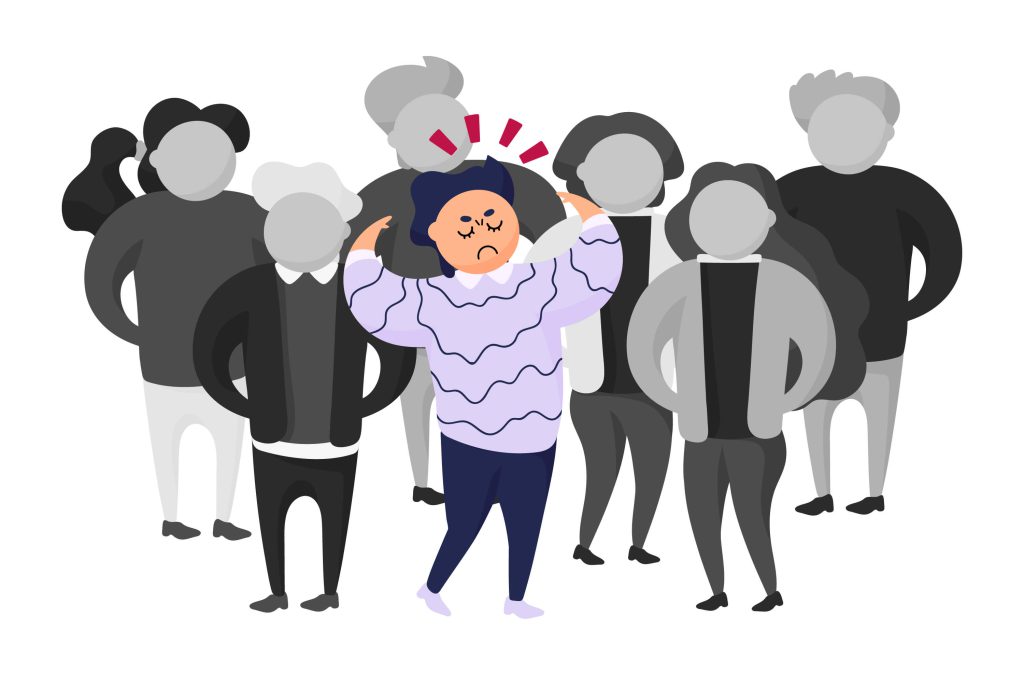
Types of Dissociative Disorders
The following are the main types of dissociative disorders:
Dissociative Identity Disorder (DID): Formerly known as multiple personality disorder, DID is characterized by the presence of two or more distinct personality states or identities within an individual. These identities may have their own unique traits, behaviors, memories, and perceptions. Individuals with DID often experience gaps in their memory for significant periods or events in their lives.
Dissociative Amnesia: Dissociative amnesia involves the inability to recall important personal information, typically related to traumatic or stressful events. Memory loss is typically selective and not due to a physical injury or other neurological condition. In some cases, the memories may resurface over time or with therapy.
Depersonalization/Derealization Disorder: Depersonalization involves a sense of detachment or feeling disconnected from one’s self, body, or mental processes. Derealization, on the other hand, is characterized by a sense of detachment or unreality concerning one’s surroundings or the external world. These experiences can be distressing and may interfere with daily functioning.
Other Specified Dissociative Disorder (OSDD) and Unspecified Dissociative Disorder: These categories are used when individuals experience symptoms of a dissociative disorder but do not meet the full criteria for any specific disorder mentioned above.
9. Somatic Symptoms and Related Disorders
Somatic Symptoms and Related Disorders, as categorized in the Diagnostic and Statistical Manual of Mental Disorders (DSM-5), involve physical symptoms or concerns that are disproportionate, excessive, or distressing, leading to significant impairment in daily functioning.

Types of Somatic Disorder and Related Disorders
The following are the main types of somatic symptoms and related disorders:
Somatic Symptom Disorder: This disorder is characterized by the presence of one or more distressing somatic (physical) symptoms that are accompanied by excessive thoughts, feelings, or behaviors related to those symptoms. The symptoms may or may not have a known medical cause but cause significant distress or impairment in functioning.
Illness Anxiety Disorder: This disorder, previously known as hypochondriasis, is characterized by excessive worry or preoccupation with having a serious illness, despite having little or no medical evidence to support the belief. Individuals with illness anxiety disorder often misinterpret normal bodily sensations as signs of a severe medical condition, leading to significant anxiety and distress.
Conversion Disorder (Functional Neurological Symptom Disorder): Conversion disorder involves the presence of neurological symptoms, such as weakness, paralysis, or sensory disturbances, that cannot be explained by a medical condition or neurological disorder. These symptoms are believed to be related to psychological stress or conflicts and are often not under voluntary control.
Psychological Factors Affecting Other Medical Conditions
This category encompasses situations where psychological factors, such as stress, emotional distress, or maladaptive coping mechanisms, significantly influence the course or exacerbation of a coexisting medical condition. For example, someone with asthma may experience worsened symptoms during times of increased stress or anxiety.
Treatment
Treatment for somatic symptoms and related disorders often involves a multidisciplinary approach, including psychotherapy, cognitive-behavioral therapy (CBT), stress management techniques, and, in some cases, medication. The goal is to address the underlying psychological factors contributing to the symptoms, improve coping strategies, and enhance overall functioning and well-being.
10. Sleep-Wake Disorders: Insomnia Disorder
Insomnia Disorder is a type of sleep-wake disorder characterized by difficulties initiating or maintaining sleep, or experiencing non-restorative sleep, despite having adequate opportunities for sleep. It is a common sleep disorder that can significantly impact a person’s well-being, daytime functioning, and overall quality of life.

Characteristics of Insomnia Disorder
Here are some key features and characteristics of Insomnia Disorder:
Sleep Difficulties: Individuals with Insomnia Disorder typically have trouble falling asleep at the beginning of the night, staying asleep throughout the night, or both. They may experience frequent awakenings during the night or wake up too early in the morning and struggle to return to sleep.
Daytime Impairment: Insomnia can lead to various daytime impairments, including excessive sleepiness, fatigue, difficulty concentrating, irritability, mood disturbances, and impaired cognitive function. These symptoms can affect work performance, social interactions, and overall daily functioning.
Duration and Frequency: For a diagnosis of Insomnia Disorder, sleep difficulties must occur at least three nights per week and persist for at least three months.
Causative Factors: Insomnia can be caused by various factors, including stress, anxiety, depression, medical conditions, medications, caffeine or stimulant use, irregular sleep schedules, or poor sleep hygiene practices.
Types of Insomnia: Insomnia can be classified into different subtypes based on its duration and underlying causes. These subtypes include acute insomnia (short-term), persistent insomnia (long-term), and comorbid insomnia (associated with other medical or psychiatric conditions).
Treatment
Treatment for Insomnia Disorder typically involves a combination of behavioral interventions and, in some cases, medication. Some common approaches include:
Sleep Hygiene Education: Promoting healthy sleep habits and routines, such as maintaining a regular sleep schedule, creating a comfortable sleep environment, and avoiding stimulating activities close to bedtime.
Cognitive-Behavioral Therapy for Insomnia (CBT-I): A structured therapeutic approach that targets thoughts, beliefs, and behaviors related to sleep, aiming to improve sleep quality and promote better sleep habits.
Stimulus Control Therapy: Techniques that help associate the bedroom and bed with sleep and relaxation, improving sleep onset and maintenance.
Relaxation Techniques: Practices such as progressive muscle relaxation, deep breathing exercises, and mindfulness meditation that promote physical and mental relaxation to aid in falling asleep.
Sleep Restriction: A strategy that involves limiting the time spent in bed to the actual amount of sleep obtained, aiming to increase sleep efficiency.
Medication: In some cases, doctors may prescribe short-term use of sleep medications to help manage insomnia symptoms.
It’s important to consult with a mental health care professional for an accurate diagnosis and appropriate treatment plan tailored to individual needs. They can provide guidance, recommend appropriate interventions, and help address any underlying factors contributing to any mental disorder.
Love,
Saurabh Goel
Read 5 Most Common Mental Disorders – Mental Health Terms | Part – 1
Saurabh Goel
He is the Founder and CEO of the Training and Counselling Company ‘Brain Soul & You’. He is an NLP Wellness Coach, Life Coach, Brain analyst, and Trainer for Education, Corporate, and Entrepreneurship. For more than 7 years, he delivered presentations on entrepreneurship, mind programming, and motivation. He did his B.tech in IT and later choose to be a successful psychologist. He is helping people in various ways through his counseling and training sessions.

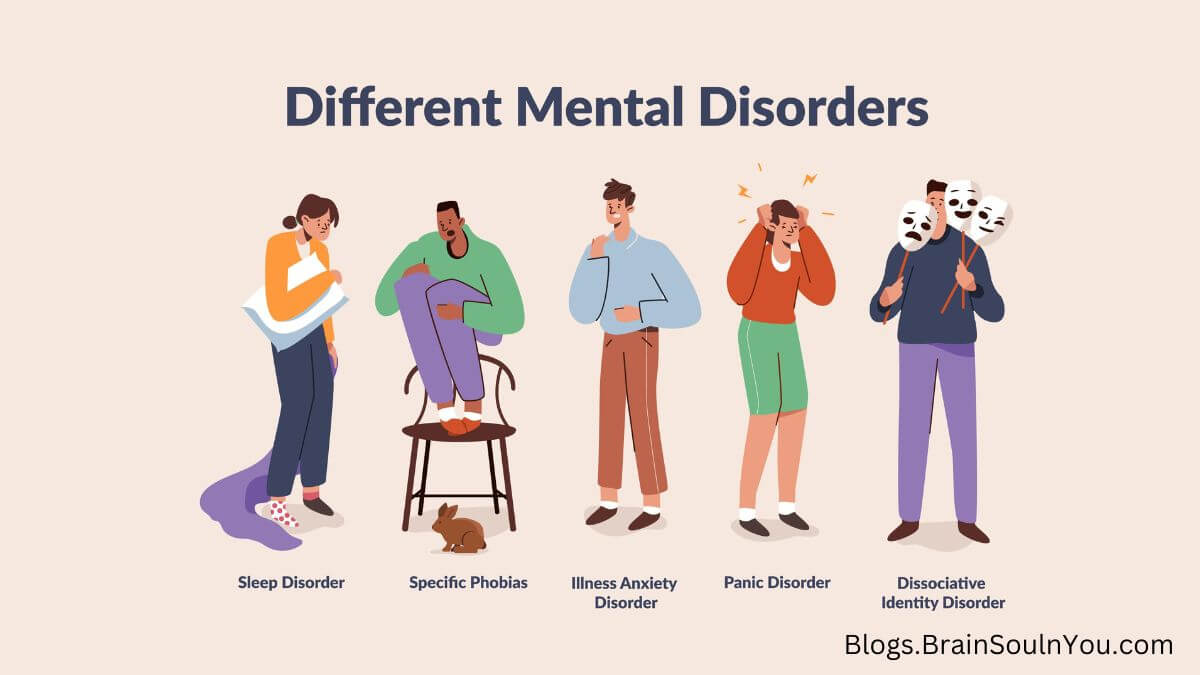

1 thought on “10 Mental Disorders – Mental Health Terms | Part – 2”